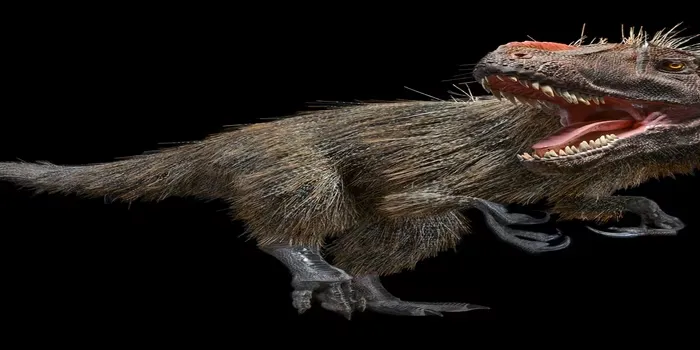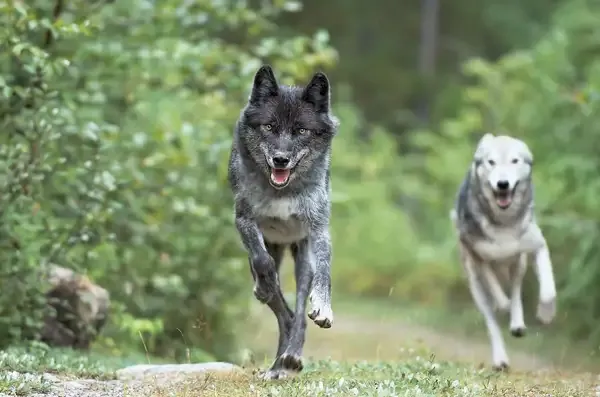- Home >
- Science
- > Innovation
Did Dinosaurs Really Have Feathers?
Recent paleontological discoveries suggest that many dinosaurs, particularly theropods, likely had feathers. Fossil evidence from China and other regions reveals imprints of feather-like structures, indicating that feathers were more widespread among dinosaurs than previously thought. These feathers might have served various functions, including temperature regulation, display, and aiding in flight for some species. The presence of feathers in certain dinosaur species also suggests a closer evolutionary relationship between dinosaurs and modern birds, reshaping our understanding of their appearance and behavior.

When discussing the appearance of dinosaurs, one of the most controversial topics is whether these ancient creatures had feathers. Recent fossil discoveries and advancements in paleontology have significantly changed our understanding of the relationship between birds and dinosaurs. This article explores the evidence supporting the idea that some dinosaurs indeed had feathers, how this discovery impacts our perception of these magnificent creatures, and what it tells us about the evolution of birds.
The Evidence for Feathers in Dinosaurs
Fossils have provided crucial insights into the appearance of dinosaurs. In recent years, numerous findings have pointed towards the presence of feathers in certain species. For example, the discovery of Velociraptor fossils with feather impressions in Mongolia has sparked interest and debate among scientists and enthusiasts alike. The presence of feathers on this small theropod dinosaur suggests a closer link to modern birds.
Further evidence comes from the fossilized remains of Therizinosaurus and Microraptor, both of which exhibit clear indications of feather structures. These findings have led researchers to propose that feathers may have evolved for various purposes, including insulation, display, and ultimately, flight.
Types of Feathers Found in Dinosaurs
Not all feathers are created equal. In the context of dinosaurs, paleontologists have identified several types of feathers:
| Type of Feather | Description |
|---|---|
| Simple Filaments | These resemble hair-like structures and may have served for insulation or display. |
| Barbed Feathers | Similar to modern bird feathers, these were likely used for aerodynamic purposes. |
| Flight Feathers | These specialized feathers indicate that some dinosaurs had the capability of powered flight. |
This classification helps scientists understand the evolutionary progression of feathers and their functions in different dinosaur species. The presence of various feather types indicates a complex evolutionary history, suggesting that feathers may have initially served non-flight-related purposes before being adapted for flight in later species.
The Evolutionary Link Between Dinosaurs and Birds
The debate over whether dinosaurs had feathers is closely tied to the larger discussion about the evolutionary relationship between dinosaurs and birds. Modern birds are considered to be the direct descendants of small theropod dinosaurs. This connection is supported by numerous anatomical similarities, including the structure of bones and the presence of feathers.
One of the most compelling pieces of evidence for this link is the discovery of the Archaeopteryx, a transitional fossil that showcases characteristics of both dinosaurs and birds. With its feathered wings and dinosaur-like teeth and tail, Archaeopteryx serves as a crucial link in understanding how feathers evolved and how they contributed to the development of flight.
Impact on Popular Culture and Perception
The depiction of dinosaurs in media has long been dominated by the image of scaly, lizard-like creatures. However, the evidence for feathers has led to a significant shift in how dinosaurs are portrayed in films, documentaries, and educational materials. The notion of feathered dinosaurs has sparked interest and curiosity, making them more relatable and dynamic in the eyes of the public.
For instance, movies like Jurassic World and documentaries on platforms like Netflix have started to incorporate more accurate representations of feathered dinosaurs. This shift not only enhances the visual appeal of these creatures but also educates viewers about the complexities of their biology and evolution.
Conclusion
In conclusion, the evidence suggests that at least some dinosaurs had feathers, challenging the traditional image of these creatures. Fossil discoveries have revealed that feathers likely served multiple purposes, from insulation to display and eventually flight. This knowledge enhances our understanding of the evolutionary link between dinosaurs and modern birds, reshaping our perception of these ancient beings.
As paleontology continues to evolve, it is essential to stay informed about new discoveries and research. The question, "Did dinosaurs really have feathers?" is not just about their appearance; it is a window into the past that helps us understand the intricate web of life that has existed on Earth. With ongoing research and new fossil discoveries, we can expect to learn even more about the fascinating world of dinosaurs and their feathered relatives.












